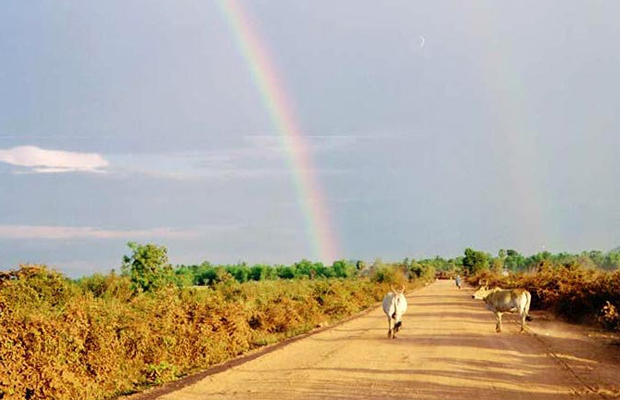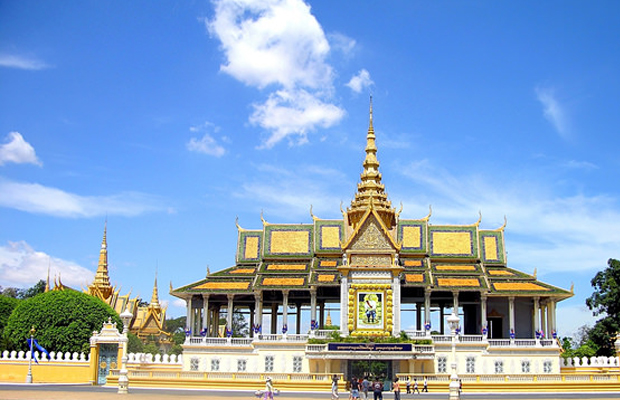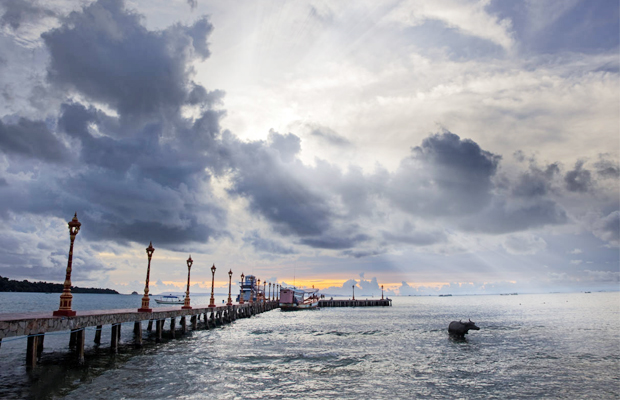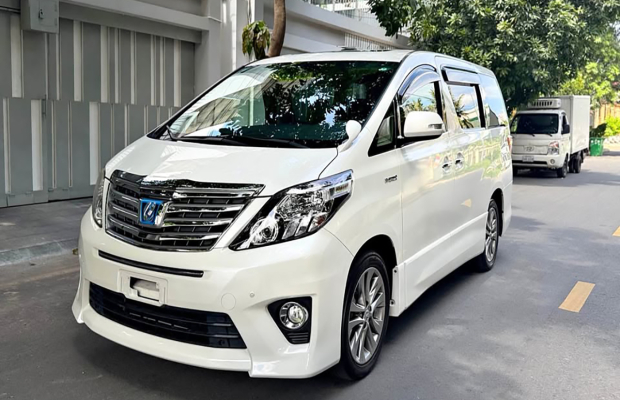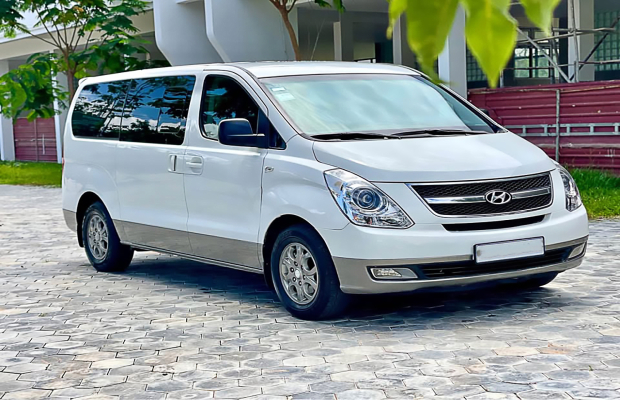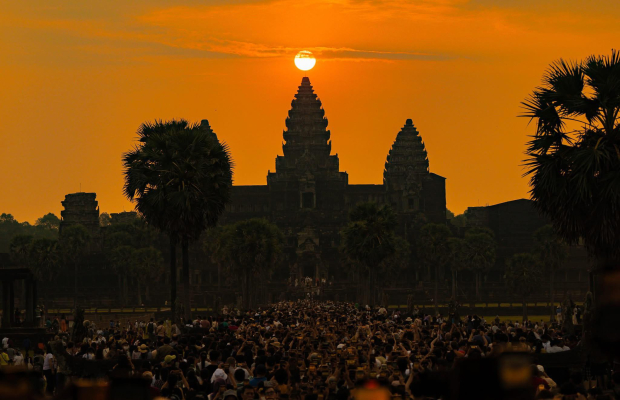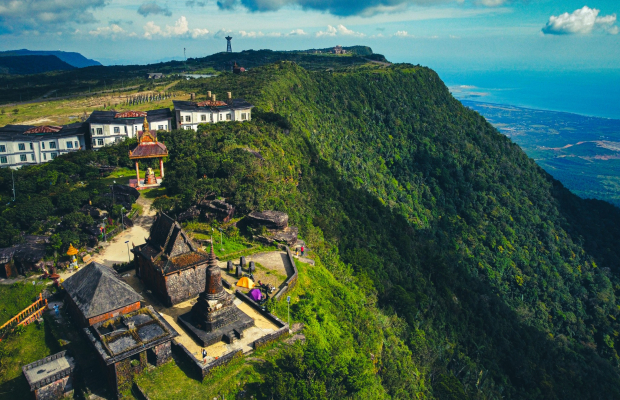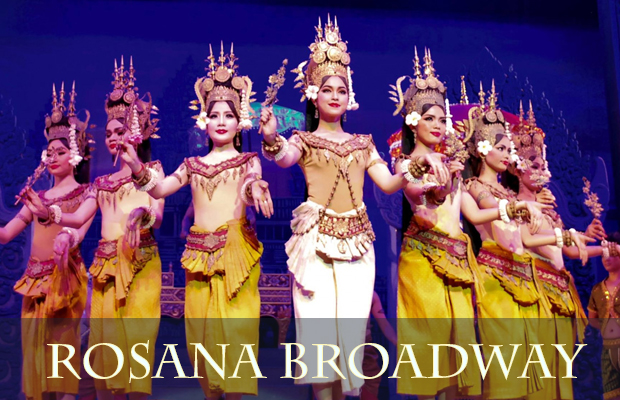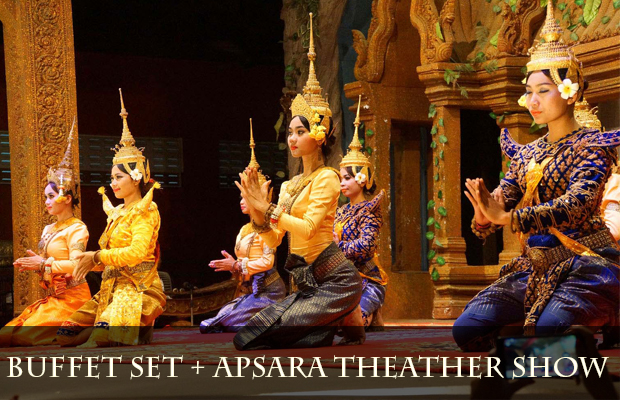Explore
Cambodia Weather
Overview of Cambodia Weather
Cambodia has two distinct seasons -- the wet and the dry -- and you can see them in action on our interactive Cambodia weather map.
Cambodia's wet season comes courtesy of the southwest monsoon which blows from May to October, bringing with it some 75% of Cambodia's annual rainfall. Not surprisingly, wet season is characterised by rain, and in the peak of wet season from July to September it can rain as much as two out of every three days. Rainy days tend to have a few hours of heavy rain rather than being all-day downpours, though the latter do occur -- you will get wet travelling in a Cambodian wet season.
Aside from getting drenched, the main disadvantage of travelling in wet season in Cambodia relates to flooding and degraded road conditions. The bulk of roads in Cambodia are dirt and in wet season they turn to heavily rutted and pot-holed mud-pits. Travelling in rural areas, particularly the north and northeast of the country, can be slowed considerably. You will still be able to go just about anywhere, it will just take longer.
A secondary problem are bridges being out, but this is becoming less of an issue as the quality of bridgework is improving. Cambodia's arterial routes -- namely Phnom Penh to Siem Reap, Phnom Penh to Battambang and Phnom Penh to Sihanoukville -- are all-weather, sealed affairs and far less of a problem than the unsealed roads.
On the upside, monsoonal Cambodia is a beautiful country to travel in. The dust is all gone (turned to mud unfortunately) and the lush greenery of the country returns. Angkor Wat in particular can be stunning in wet season -- the birdlife is far more obvious and the ruins have a unique appearance and feel. Observing Angkor Wat with a lightning storm as a backdrop is an electrifying experience (couldn't resist!). There are also far fewer travellers in the country, so if you prefer to dodge the crowds, wet season can be a good time to visit.
Regionally, the Cardamom mountains get the heaviest rain in the country, while the entire coastline gets rough seas and a lot of rain.
Cambodia's dry season runs from October to April, when the dusty northeast monsoon arrives. Blowing like a hair-dryer set to high, the northeast monsoon dries out the country fast. While November and January are quite cool (high C20s) by April the weather is scorching and oh so dry it will take your breath away. Characterised by heat and dust, this season coincides with Cambodia's peak tourist season when travellers arrive in their droves between November and January to take advantage of the lack of rain and the relative cool. By March travelling can be uncomfortable and hot while April can be excrutiating.
As the country dries out, badly rutted roads get graded and trip times improve dramatically, though get incredibly dusty. Cambodia's beach strips at Kep, Sihanoukville and Ko Kong bask in brilliant sunshine with clear calm waters -- if you're a beach bum, dry season is the season for you.
Summary of Cambodia Climates
Dry season runs from November to April on the back of the northeast monsoon. November to January are cooler while February to April are hot and dusty. November is the coolest month, April the hottest.
Wet season runs from May to October courtesy of the southwest monsoon. Wet season brings some 75% of Cambodia's annual rainfall. July to September are the wettest months.
When to go
Cambodia can be visited at any time of year. The ideal months are December and January, when humidity levels are relatively low, there is little rainfall and a cooling breeze whips across the land, but this is also peak season when the majority of visitors descend on the country.
From early February temperatures keep rising until the killer month, April, when the mercury often exceeds 40°C. Some time in May or June, the southwestern monsoon brings rain and high humidity, cooking up a sweat for all but the hardiest of visitors. The wet season, which lasts until October, isn’t such a bad time to visit, as the rain tends to come in short, sharp downpours. Angkor is surrounded by lush foliage and the moats are full of water at this time of year. If you are planning to visit isolated areas, however, the wet season makes for tough travel.
Some visitors like to coordinate their trip with one of the annual festivals, such as Bon Om Tuk or Khmer New Year.



